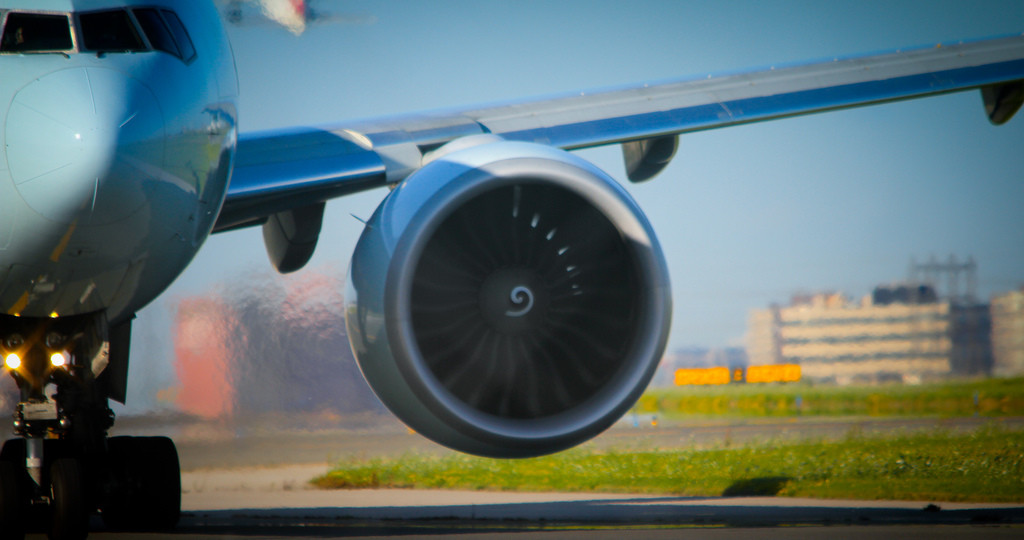
[Image above] Credit: Farhan Amoor; Flickr CC BY 2.0
If you can’t stand the heat, then get out of the… jet engine?
We know that the efficiency of jet engines and turbines depends on how much heat they can withstand and if the materials of the engine components are lightweight. Jet engine parts have long been constructed from metals—like titanium, nickel, and aluminum—because the strength-to-weight ratio and resistance to extreme heat and corrosion of these materials have made them ideal for use in high-powered engines.
But titanium alloys aren’t the lightest, strongest, most-heat-resistant kids on the block anymore. They haven’t been for a long time. And with the U.S. Environmental Protection Agency working tirelessly to develop new, stringent standards to reduce emissions from airplanes, more energy efficient engines are a must, not an option.
Enter: ceramic matrix composites in engines. Jim Vartuli, manager of GE’s engineered ceramic laboratory, describes in a new video how GE is revolutionizing jet engines using CMCs.
Credit: General Electric; YouTube
“We’re working on rolling out a state-of-the-art ceramic to go in our turbines,” Vartuli says in the video.
Because CMCs are made of ceramic fibers embedded in a ceramic matrix, which form a ceramic-fiber reinforced material—they’re stronger than conventional technical ceramic materials. “CMCs are materials that have the high-temperature capability of traditional ceramics—but they also have the mechanical properties of metal,” says Vartuli.
“Today we operate the turbine materials near their melt point. What we want to do is put a material that has a higher melt point, higher temperature capability. And that’s what these ceramics can enable.”
GE says that CMCs will replace certain metal components in the hot section of the engine, and, in turn, this will help reduce fuel burn and emissions.
“We’re in a situation where we can have a sizable jump in fuel efficiency, just based upon this technology alone,” says Vartuli.
At the 11th International Conference on Ceramic Materials and Components for Energy and Environment Applications held in June in Vancouver, Canada, Sanjay Correa of GE Aviation described GE’s investment in CMCs and the significant energy savings new aircraft engines are expected to realize.
To stay on top of these trends, be sure to save the date for the 40th International Conference and Exposition on Advanced Ceramics and Composites in Daytona Beach, Fla., Jan. 24–29. Correa will be a plenary presenter at the event and will discuss the latest trends and research in this area.
How do you think CMCs will change the future of fuel efficiency in the next ten years? Share your thoughts with us!
